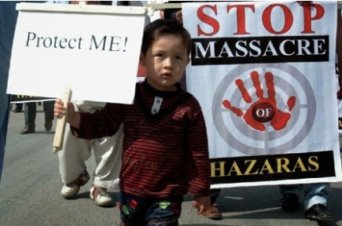- About
- Topics
- Picks
- Audio
- Story
- In-Depth
- Opinion
- News
- Donate
- Signup for our newsletterOur Editors' Best Picks.Send
Read, Debate: Engage.
This week wrote yet another blood-stained chapter in the history of Afghanistan’s persecuted ethnic Shia-Haraza minority who has long been complaining of discrimination on the basis of their religious belief.
A suicide bomber, allegedly associated with the so-called Islamic State (IS), ripped through Hazara men praying inside a mosque in the heart of the Afghan capital Kabul on Monday November 21. The attack claimed 27 lives, including children, and left more than 30 wounded. This was the third targeted attack on this minority in Kabul city in less than a year!
Over 80 Hazara community members died when two suicide bombers detonated their explosives in the middle of a protests rally in July. This was followed by an armed assault on a mosque belonging to the Hazara community in downtown Kabul that claimed eight lives. Apart from these armed assaults, the Hazara community members are frequently abducted while travelling on the country’s deadly highways from one province to another.
Afghanistan has been witnessing large scale armed conflict for the past four decades now but sectarian strife was never as pronounced as it has become in the past two years. These appalling attacks have once again highlighted the bloody, expanding footprint of the militant Islamic State group in Afghanistan that has shaken the fabric of national unity in the war-torn nation.
The Hazara community represents around 10 percent of Afghanistan’s population yet it represents a relatively higher percentage of the country’s educated populace; particularly educated and professional girls and women. But, despite their services to the community, they remain an easy target due to their distinct facial features for fanatic organizations like the IS and Lashkar-i-Jhangavi.
It is worth noticing that most of the IS fighters hail from the Orakzai tribal agency across the Durand Line in Pakistan.
Unlike many of its neighbours, Afghanistan has surprisingly remained immune to the sectarian rift between the majority Sunni and minority Shia communities. This rift has devastated countries like Iraq, Syria and Pakistan but, if no measures are put in place to stop the persecution of this religious minority, the Afghans might well find themselves caught in yet another deadly circle that would shatter the society from within.
As Afghanistan passes through the so-called decade of transition (2014-2024) following the end of NATO’s 15-year old combat mission, the Kabul government needs to make sure it does not turn a blind eye to segment of the society that has long been persecuted.
